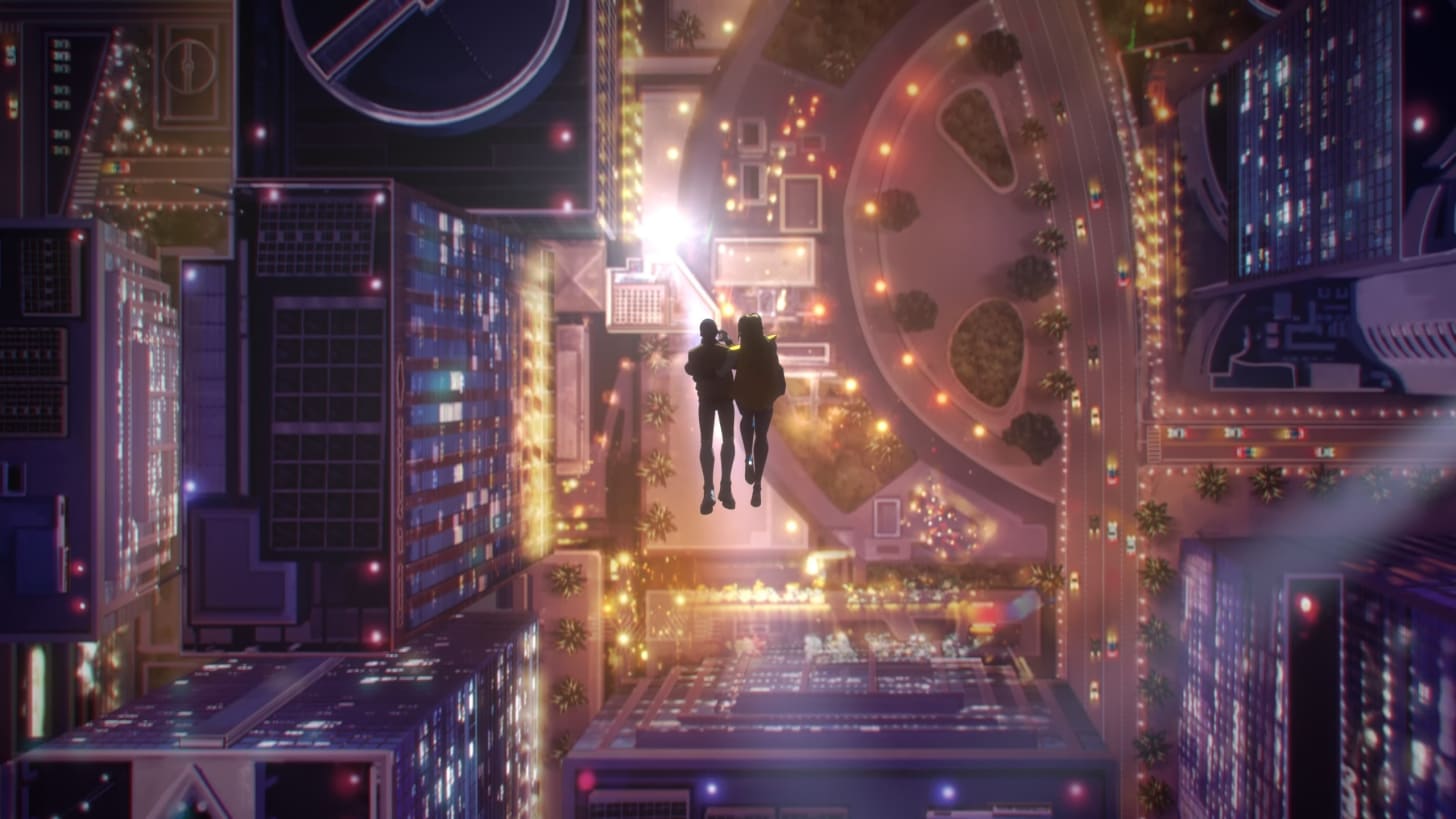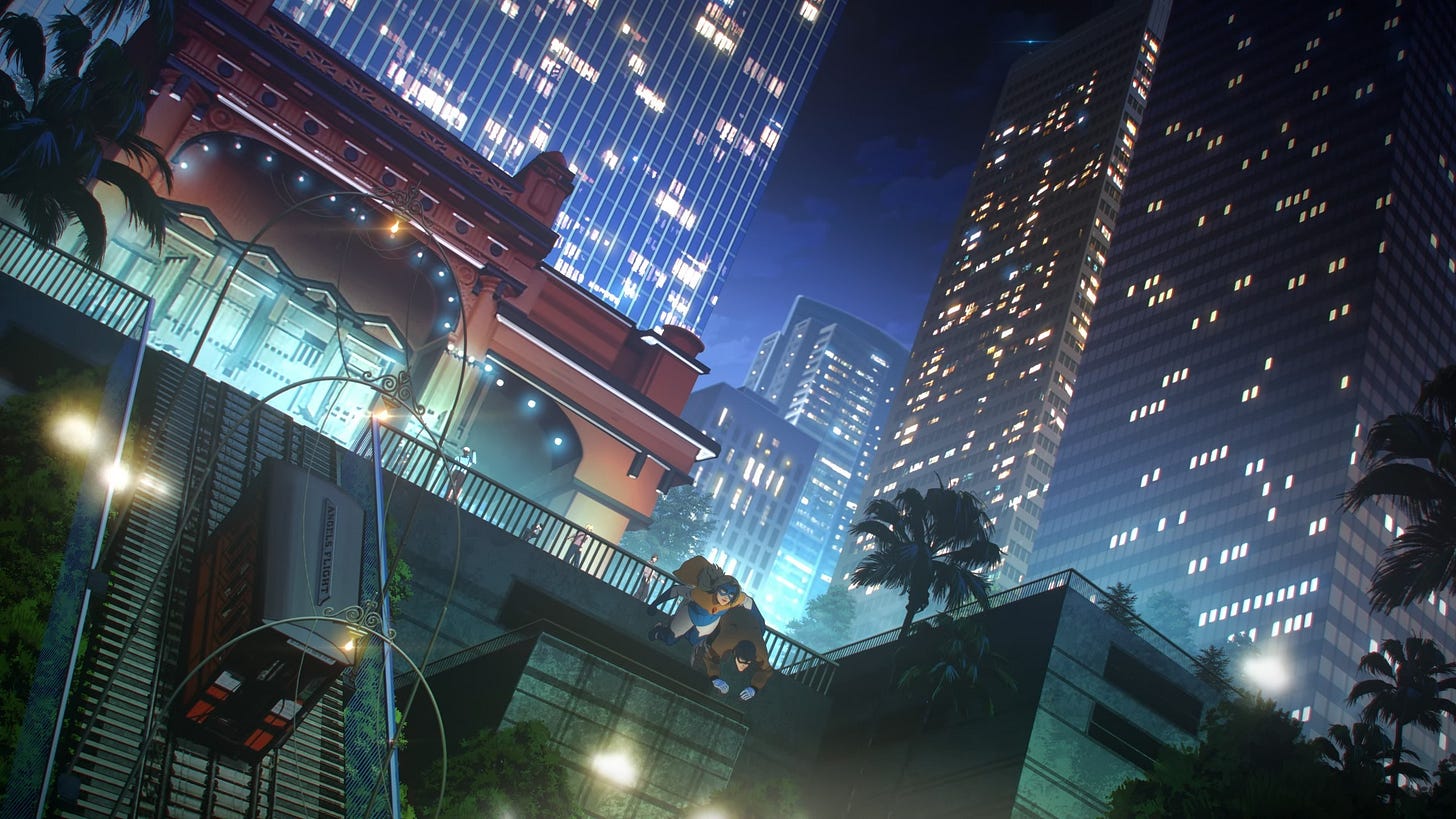Dispatch from Dispatch
Architecture without Space
Telltale Games made several of my favorite games of all time. The Walking Dead Season 1, The Wolf Among Us, and Tales from the Borderlands still rank as some of the best storytelling in any medium. I still cry thinking about The Walking Dead Season 1, especially now that I have kids of my own. So, when Dispatch was announced, I was hopeful that many members of the original Telltale team were able to recapture that magic.
The old Telltale games used a strict formula that allowed stories to exist in a specific sandbox. Levels needed to be simple with blocky architecture to allow rudimentary controls, as this was available on iPad, to move freely and interact with the environments without fuss. Spaces were often oversized in plan, creating necessary distortions, to give wide berths for awkwardly walking around all the crap on the ground. This streamlined gameplay to avoid frustrations with the weakest part of the game (the escape room-style searching).
The downfall of the genre (and reemergence) was/is based on the strength of the writing. When the writing became bland and the decisions became obvious (i.e. Guardians of the Galaxy Telltale game), the games lost their luster. All that was left is the dullest wandering from clunky level to clunky level, clicking on the glowy thing for my force-fed, yawn-inducing decisions. Telltale Games closed down in 2018, and after a bit of time, AdHoc, the developer of Dispatch, was formed.
Dispatch follows Robert Robertson, the washed-up world-famous superhero Mecha Man. He takes on a new gig, sending reformed superheroes on missions to help them get better at their jobs. The overall plot proceeds the way you might imagine, but the relationships being developed are deep and thoughtful. I’d love to talk for hours about how interesting characters like Chase and Waterboy are, and the ways they tap into feelings of nostalgia/loss and fatherhood/protection, respectively. It’s important to discuss how the game innovates beyond escape-room mechanisms. Instead, I stumbled onto an interesting idea that I’d like to explore as an architect rather than LARPing as a game reviewer.
Architecture without Space
Dispatch is part of a medium made up of 2-dimensional representation of a 3-dimensional space. Most video games and films fall into this category, but Dispatch pushed me to think about it the way I think about films that use practical effects and set designs. It’s not about the faithful representation of space, but rather creating an experience that the space is meant to create.
If you’ve ever watched an old movie that uses models rather than green screen technology with CGI, there is an interesting interpretation of detail that happens between shots. Guillermo Del Toro is a master of manipulating space in this way. I recall an interview with Charlie Day where he talks about his experience on the set of Pacific Rim, in which he recounts the scene where he drops his glasses, and instead of trying to get a shot of his glasses, there is a replica made that was “the size of a couch” to get the scene to evoke a specific experience. He does it in Pinocchio as well, by utilizing many different scales of the titular character depending on the type of scene.
These are mostly examples of the manipulation of 3-dimensional spaces and how much detail is shown. If you ask an architect what architecture is, it involves some sort of manipulation of 3-D space. What happens when a 3-D space is recreated with 2-D techniques and stitched in with 3-D techniques? It’s an interesting question because that is more or less a question that architects ask themselves every day. Our entire job is to design something in 3-D, then translate it to 2-D, but it’s not about recreating the experience; rather, it is about creating instructions to build the building.
Dispatch utilizes a type of 2-dimensional digital rendering to convey feelings (in this case, a bland office or expansive city). It’s a technique used frequently in comics and animation to help limit costly modeling time. In this case, it creates landscapes and vignettes to fill out emotional moments. Flying through the city with a new friend becomes a moment of connection brimming with atmosphere. Wes Andersonesque visuals of an office accentuating the inane lighting layouts of a thoughtlessly crafted acoustic tile ceiling fill me with the same sense of hopelessness I have when walking through a cubicle-filled office floor. In some ways, these moments are deeper than if they had been perfectly modeled and rendered. Being reliant on computers to evoke the atmosphere that we want can be difficult; in reality, we are only in control of a handful of settings for a computer to spit out an image the way we want it. The more of a medium you push to other entities, the less room we have to expand our creativity.
As game budgets balloon to unreal numbers, developers need creative ways to craft their visions. I consider this type of art direction to be low-hanging fruit. Supergiant has been a master at utilizing this type of art direction. Hades and Hades 2 create these deep, thoughtful backgrounds that create space to exhibit lore or imagine characters the way we want them to be. At some point, I’ll try to write about how they accomplish this in Hades 2, but for now, I’m happy with the strides that Dispatch has made in artistic representation.






